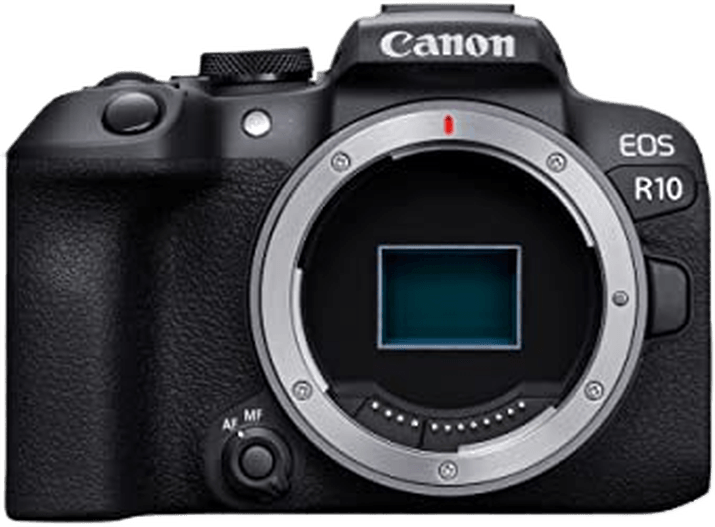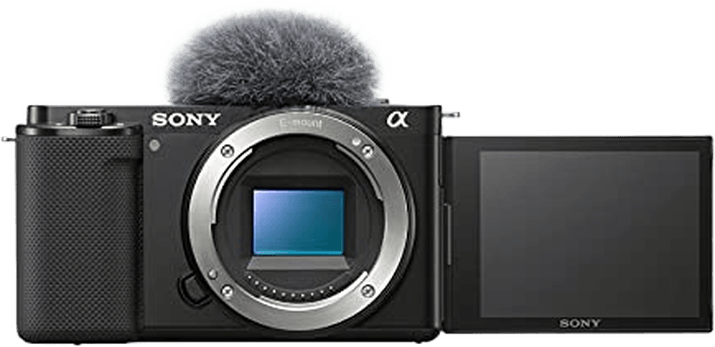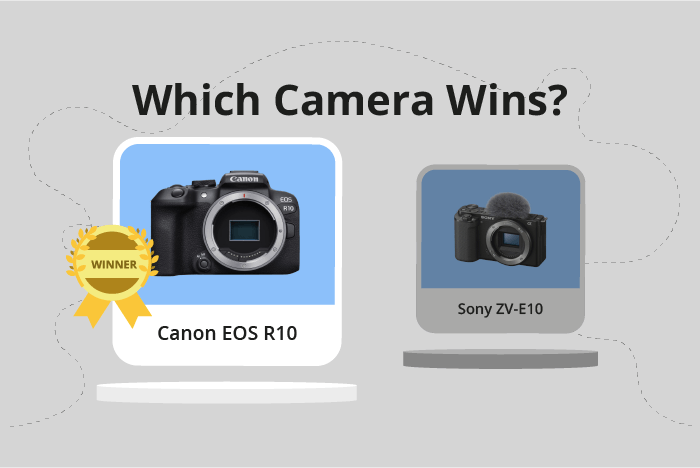Canon EOS R10 vs Sony ZV-E10 Comparison
Canon EOS R10

Sony ZV-E10

The Canon EOS R10 takes the lead with a score of 69/100, while the Sony ZV-E10 trails slightly behind at 65/100. Both cameras are mirrorless and were released within a year of each other, with the Canon EOS R10 being the more recent model. Despite their similarities, there are notable differences between the two.
The Canon EOS R10 is larger and heavier, measuring 123 x 88 x 83mm and weighing 426g, compared to the Sony ZV-E10’s dimensions of 115 x 64 x 45mm and weight of 343g. This extra heft may provide a more comfortable grip for some users, contributing to its higher score.
On the other hand, the Sony ZV-E10 boasts a more affordable launch price of $700, compared to the Canon EOS R10’s $980. This price difference may appeal to budget-conscious consumers who prioritize value over other factors.
Considering the specifications, the Canon EOS R10’s higher score suggests it offers a better overall experience for photographers. However, the Sony ZV-E10’s lower price may make it a more attractive option for those on a budget. Ultimately, the choice between the two cameras will depend on individual preferences and priorities.
Canon EOS R10 vs Sony ZV-E10 Overview and Optics
The Canon EOS R10 wins in the optics comparison with a score of 71/100, while the Sony ZV-E10 scores 69/100. Both cameras share some common specifications, such as having 24 megapixels, CMOS sensor type, APS-C sensor size, and no image stabilization.
The Canon EOS R10 outperforms the Sony ZV-E10 in certain aspects. It has a faster shooting speed of 15 frames per second compared to the Sony’s 11 frames per second. Additionally, the EOS R10 features a Digic X processor, which provides faster image processing and better image quality. The camera also boasts a higher DXOMARK score of 97 for its sensor, indicating superior image quality and performance.
On the other hand, the Sony ZV-E10 has a few advantages over the Canon EOS R10. It offers a 4:3 aspect ratio, which is more versatile for various shooting situations and formats. The ZV-E10 also uses the Sony E lens mount, which supports a wide range of lenses, providing more options for photographers.
To sum up, the Canon EOS R10 takes the lead in optics with a slightly higher score, faster shooting speed, superior processor, and better sensor performance. However, the Sony ZV-E10 offers a more versatile aspect ratio and wider lens compatibility. Ultimately, the choice between these two cameras will depend on the specific needs and preferences of the photographer.
Canon EOS R10 vs Sony ZV-E10 Video Performance
The Canon EOS R10 and Sony ZV-E10 both have a video score of 91/100, indicating equal performance in video capabilities. They share several common specifications, including 4K max video resolution, 120fps max video frame rate, and built-in time-lapse functionality.
Despite having the same video score, the Canon EOS R10 offers slightly higher max video dimensions of 3840 x 2160 compared to the Sony ZV-E10’s 3840 x 1920. This difference in dimensions results in a marginally better video quality for the Canon EOS R10, providing users with a more detailed and immersive viewing experience.
On the other hand, the Sony ZV-E10’s video capabilities are not significantly worse than the Canon EOS R10. With a max video frame rate of 120fps, users can still capture smooth and high-quality footage. The slight difference in max video dimensions may not be noticeable to the average viewer.
In terms of video capabilities, both the Canon EOS R10 and Sony ZV-E10 are strong choices for users seeking high-quality video performance. The minor distinction in max video dimensions gives the Canon EOS R10 a slight edge, but the Sony ZV-E10 remains a competitive option. Ultimately, users should base their decision on additional factors such as price, design, and overall functionality.
Canon EOS R10 vs Sony ZV-E10 Features and Benefits
The Canon EOS R10 outperforms the Sony ZV-E10 in terms of features, scoring 70/100, while the Sony ZV-E10 lags slightly behind with a score of 68/100. Both cameras share several specifications, making them quite similar in some aspects. They both have a 3-inch screen, touchscreen functionality, flip screen, and lack GPS. Additionally, both cameras come equipped with WIFI and Bluetooth capabilities.
The Canon EOS R10 surpasses the Sony ZV-E10 in screen resolution, boasting 1,040,000 dots compared to the ZV-E10’s 920,000 dots. This higher resolution allows for sharper and clearer image previews, providing a better user experience for photographers and videographers alike.
Despite its lower overall score, the Sony ZV-E10 does have some advantages over the Canon EOS R10. However, based on the given specifications, there is no clear area where the Sony ZV-E10 outperforms the Canon EOS R10. It is important to consider other factors such as price, lens options, and personal preferences when choosing between these two cameras.
Taking into account the feature scores and specifications, the Canon EOS R10 emerges as the better camera in this comparison. Its superior screen resolution enhances the user experience and provides clearer image previews. While the Sony ZV-E10 shares many similarities with the Canon EOS R10, it falls short in terms of screen resolution. Ultimately, the choice between these two cameras will come down to individual needs and preferences, but the Canon EOS R10 holds a slight edge in terms of features.
Canon EOS R10 vs Sony ZV-E10 Storage and Battery
The Canon EOS R10 takes the lead in storage and battery with a score of 40/100, compared to the Sony ZV-E10’s score of 24/100. Both cameras share some common specifications, such as having one memory card slot and accepting SD/SDHC/SDXC cards. However, the Canon EOS R10 is superior in a few aspects.
The Canon EOS R10 has a battery life of 450 shots, while the Sony ZV-E10 falls slightly behind with 440 shots. Moreover, the EOS R10 uses the LP-E17 battery type and offers the convenience of USB charging, which the Sony ZV-E10 lacks, using the NP-FW50 battery type instead.
On the other hand, the Sony ZV-E10 has an advantage in accepting Memory Stick Pro Duo cards in addition to the standard SD/SDHC/SDXC cards, offering users more versatility in storage options.
Considering these factors, the Canon EOS R10 proves to be the better choice in terms of storage and battery performance, with a longer battery life and the added benefit of USB charging. The Sony ZV-E10, though slightly behind, does offer additional memory card compatibility, which may be a valuable feature for some users.
Canon EOS R10 vs Sony ZV-E10 – Our Verdict
Are you still undecided about which camera is right for you? Have a look at these popular comparisons that feature the Canon EOS R10 or the Sony ZV-E10:

